Here’s what an always-on Ethernet port light means:
The always-on Ethernet port indicator light tells you that the connection between the two Ethernet ports is functional.
The light is designed to let you know that your Ethernet connection is established without performing additional tasks.
The light can come in different colors, depending on the manufacturer.
If you want to learn all about the always-on Ethernet port light, then you’re in the right place.
Keep reading!
- Ethernet Light Blinking & Computer Is Off: Why?
- Ethernet Connected But No Internet: How to Fix?
- Ethernet Port Light Colors: Meanings?
- Ethernet Light Blinks Orange/Green: Meaning?
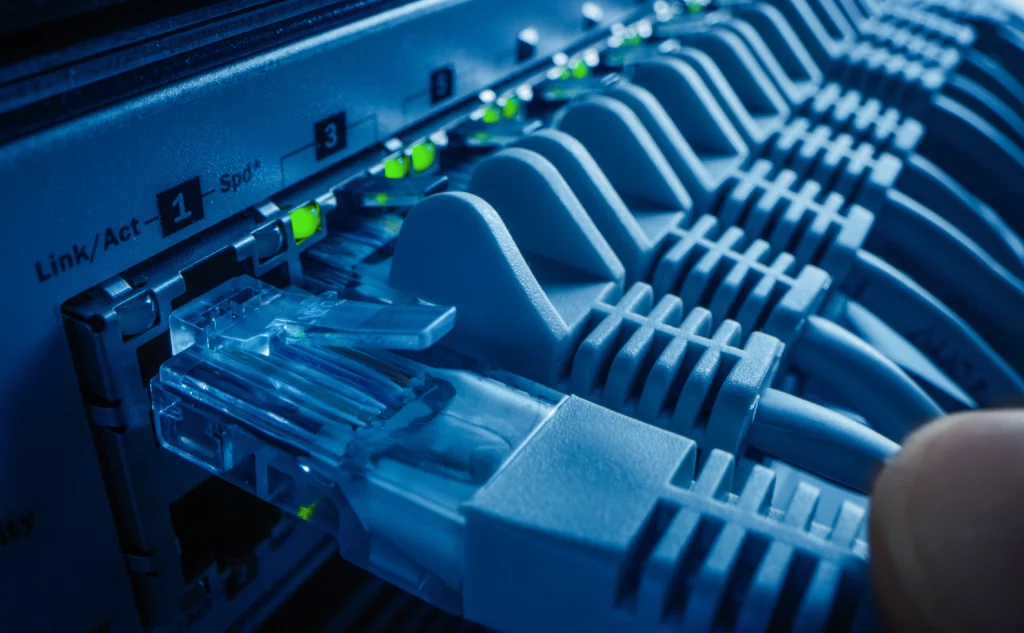
What Can an Ethernet Port Light Tell You?
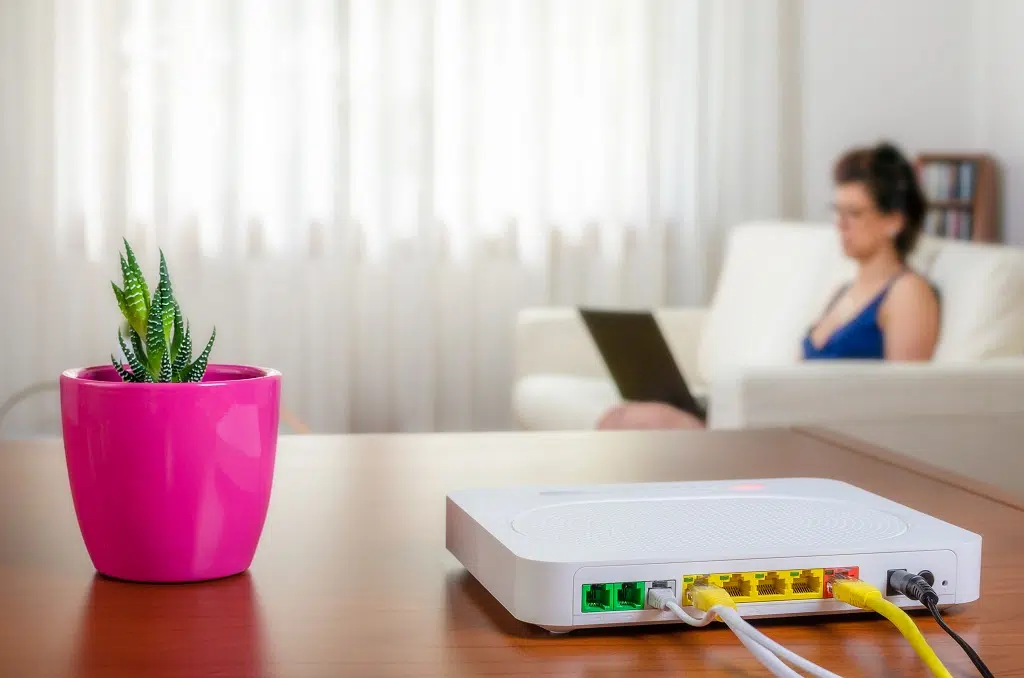
Getting deeper into the specifics of Ethernet port lights, most ports have two lights.
One is designed to flash, and the other is designed to provide a solid light.
That second light is the primary focus of this discussion.
We’re going to break down what it means and why it matters.
So, let’s start with the essentials.
In most cases, the solid light indicates that the connection between the two Ethernet ports is good.
This is known as a test light because it constantly tests the current that runs across the cable between the two ports.
If the light is able to flow, you know that the cable is able to carry communication from one device to the other.
Now, the indicator lights on your Ethernet port are designed to work together.
Even the primary focus here is the solid light.
We have to cover a little ground in regards to the flashing light.
Since the flashing light is the activity light, the solid light lets you know that the connection is on standby.
How Does the Ethernet Port Test Light Work?
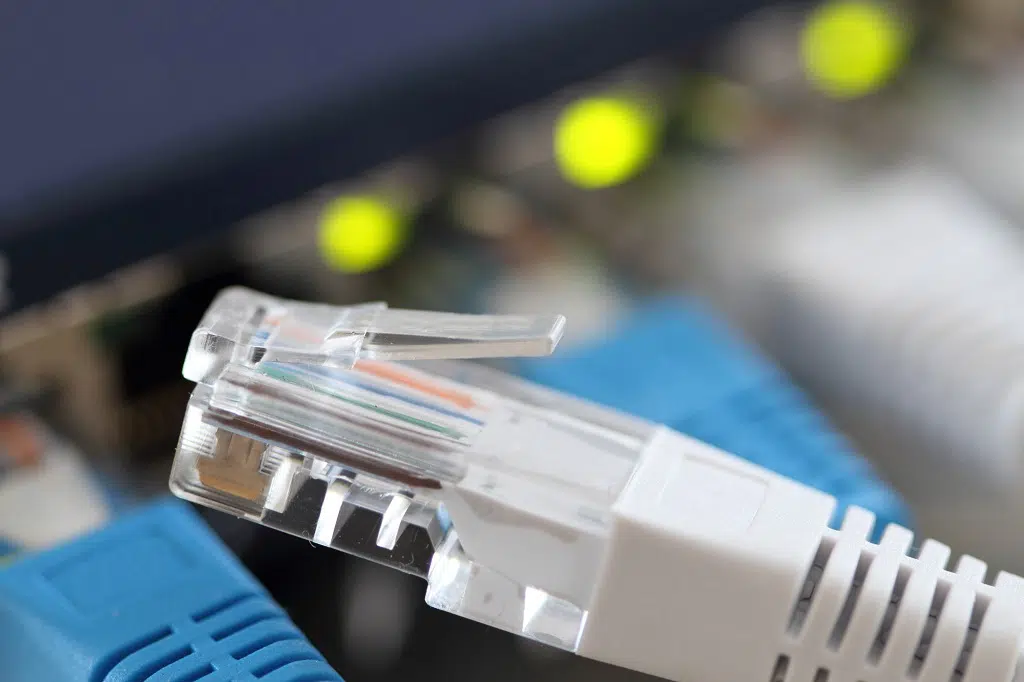
Making use of the test light becomes easier when you have a basic understanding of how it works.
When you plug an Ethernet cable into a port, nothing happens. That’s because the other end is still unconnected to anything, and until the connection is complete, the cable cannot do anything.
If both ends are connected to working devices, then an electrical signal can be sent across the cable.
This signal is what allows your internet access to function.
But, in terms of the test light, it cannot shine unless electricity can flow across the cable.
This is what makes the light useful.
You know that the connection is reliable for communication because it turns the light on.
If the light never shines, then that means that the connection is unable to transmit enough electricity to light up the tiny light.
That’s a bad sign for your connection.
One of the most powerful aspects of the test light is that it stays on as long as the connection is good.
The light is perpetually testing the connection, and that is what makes it a valuable source of information.
You don’t have to pair it with other tests to know what is happening with your Ethernet cable.
What Are the Different Colors of the Ethernet Port Test Lights?

As you get deeper into your understanding of Ethernet port test lights, you’ll discover that they are not all the same color.
In fact, some test lights can display multiple colors, and this is not an accident.
Different colors are used to add the information carried by the indicator light.
The meaning of each color depends on the manufacturer, and we’ll go over the most common together in the next section.
Before that, we need to talk a little bit about Ethernet connection speeds.
In general, Ethernet can connect at 10/100/1000 speeds.
This is a standard notation, and the numbers are referencing Mbps (Megabytes per Second).
Basically, higher numbers denote faster connections.
To give a little context, a 1000 Mbps connection is also known as a Gigabit connection.
Most fiber optic internet providers start their services at this rate. In other words, 1000 Mbps is a fast connection.
As far as indicator lights, the manufacturer will set a different color for each speed.
One color will tell you that the connection is running at 1000 Mbps.
The most common colors for this are green or amber.
The secondary color will indicate a 100 Mbps connection.
For most manufacturers, a connection of 10 Mbps or less will result in the test light being dark.
There is one more vital tidbit.
It’s important to understand that when the indicator light is denoting speed, it is directly testing communication across the Ethernet cable.
This is the important part. Your actual internet connection might not mast the test-light speed.
Just as an example, if you have 100 Mbps internet service, then even if your Ethernet is connected at 1000 Mbps, your maximum download speed on the computer will only be 100 Mbps.
The internet service is the limiting factor in this example.
The purpose of the test light is to provide you with information directly regarding the Ethernet cable that is plugged into the port.
It does not tell you about the rest of the components in your network or internet connection.
Learn all about why your Ethernet port light is blinking, but there’s no internet here.
What Do the Different Colors of the Ethernet Port Light Mean? (3 Brands)

We’ve covered the gist of test lights and their color coding, but if you really want to make use of them, you have to break the codes down by the manufacturer of the given device.
Even when you do that, you’ll see variance from model to model.
When you look at the Cisco color codes, it will be apparent that there is no simplified master list to follow.
All of that said, the following breakdown will help you use the color codes on your Ethernet test lights.
#1 Cisco
There are far too many Cisco devices to cover them all in a single post.
We can simplify by limiting this entry to consumer-grade Cisco products.
We can then split the products into two groups.
The older group only offers 10/100 connections.
The newer group offers 10/100/1000 connections.
With the older group, the solid light will be amber if you have a 100 Mbps connection.
The green light should also be blinking at the same time.
If there is no amber light, the connection is less than 100 Mbps.
For the newer group, the indicator light lets you know about duplexing.
That’s a com[plicated topic in its own right.
To keep things simple, we can say that half-duplex connections are slower and less powerful than a full-duplex connection.
With that in mind, a solid green light indicates a half-duplex connection.
A flashing green light means that the connection is a full-duplex.
If the solid and flashing lights are both green, you have a 100 Mbps connection.
If the solid light is amber, you have a 1000 Mbps connection.
It’s a little complicated, but a solid amber light is the one you want to see.
#2 Netgear
Netgear devices are much simpler to understand.
They are more consistent across devices, and for the vast majority of Netgear switches, you want to see a solid white light.
That is the indicator for a 1000 Mbps connection.
If the light is amber, then your connection is slower.
Whether you connect at 100 Mbps, 10 Mbps, or slower, the light will be amber.
But, the amber light lets you know that there is a flow of current, even if the data rates are slower than the maximum possibility.
#3 Linksys
Linksys does things a little differently, and it highlights how much indicators light varies by manufacturer.
For Linksys systems, the color doesn’t tell you how fast the connection speed is.
Instead, the solid light just tells you that the cable test was successful.
Depending on the model, the light can be a number of colors.
How Can You Use the Ethernet Ports Test Light Information?
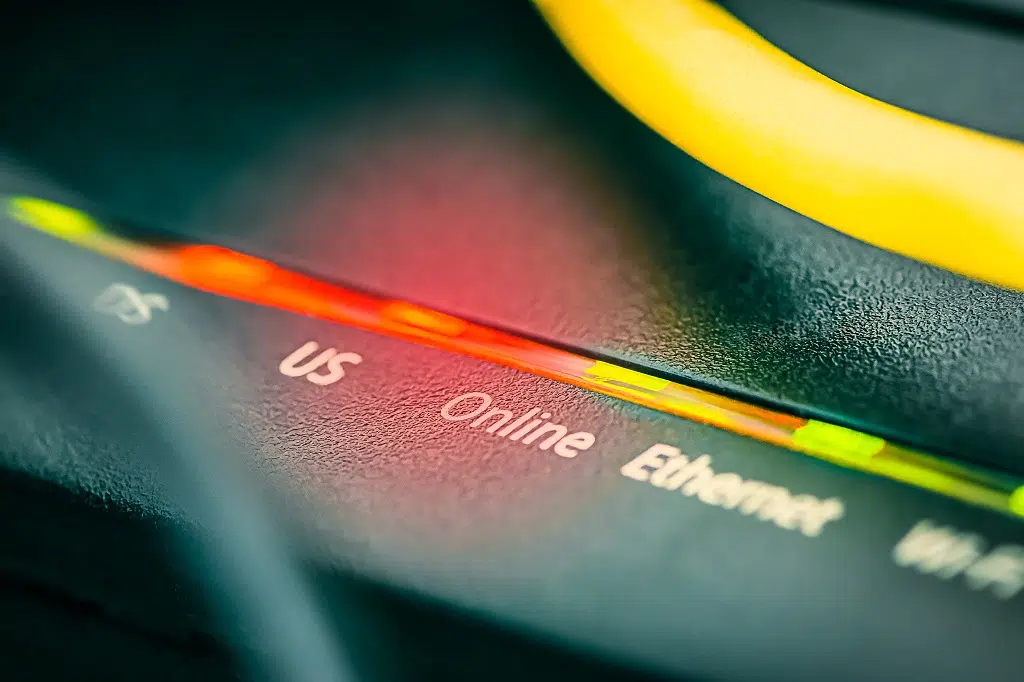
Now, we can get down to practical applications of the test light.
It provides information for a reason, and that reason is usually tied to troubleshooting.
When you use the correct color coding for your device, the solid light is there to tell you about the connection at a glance.
If your internet connection feels slow, you can look at the light and see if there’s a problem with the direct Ethernet connection.
The color of the light (depending on the make and model) will tell you right away if the problem is located between the two ports in use.
If your internet is slow and your light tells you that the problem is in the Ethernet connection, you know where to start.
You can try connecting to different ports or devices to see if you can get the optimal color.
If your internet is slow and your light says your connection is working perfectly, then you know that you can look elsewhere for the problem.
You’ve already eliminated a variable without having to perform a time-consuming test.
Does Your Ethernet Light Blink When Your Computer Is Off?
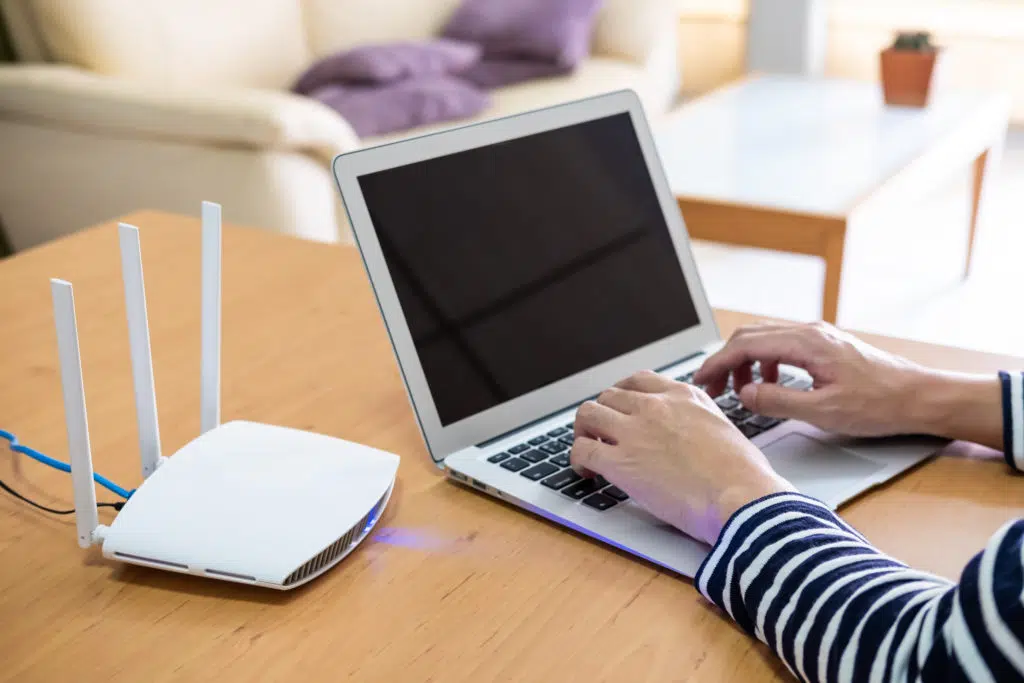
Does your Ethernet light blink but you have no internet?
The Ethernet port blinks, but you can’t connect to the internet, which means your cable is working, but your modem isn’t.
Make sure you don’t have internet access first.
After that, you can either soft reset or hard reset your modem and use known-good components to troubleshoot.
Learn all about your blinking Ethernet port light without getting an internet connection here.

